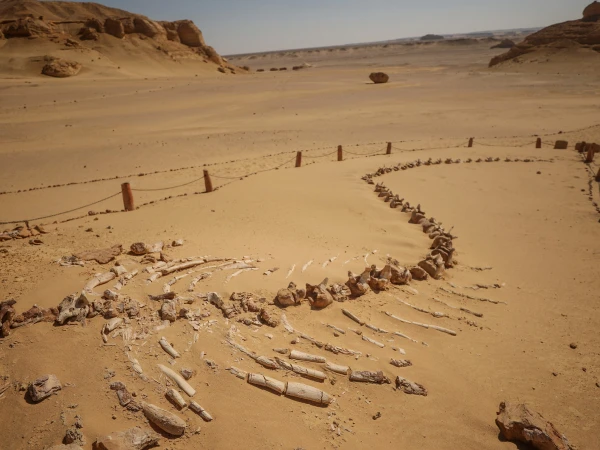A desert site in Egypt known as Whale Valley, or Wadi al-Hatan, has yielded more than 400 whale skeletons that reveal the whale’s remarkable evolutionary journey from land to sea.
The site, located in the Egyptian Sahara, contains ancient whale remains dating back to the late Eocene epoch –
the region was submerged under the Tethys Sea between 33.9 million and 55.8 million years ago, according to UNESCO. The fossils found there represent a larger evolutionary story that reveals the ocean-going mammal whale as a land-dwelling animal in its past life.
The first major discovery at Whale Valley came in 1902 when biologists discovered a previously unknown species of whale. According to a 2019 study, this ancient whale was 60 feet long and likely preyed on smaller whales, crushing their skulls before swallowing them whole.
The whale had a long snout and was equipped with pointed snouts and sharp teeth on the inside of its cheeks, said Manja Vos, a marine mammalogist at the Berlin Museum of Natural History and lead author of the 2019 study.
